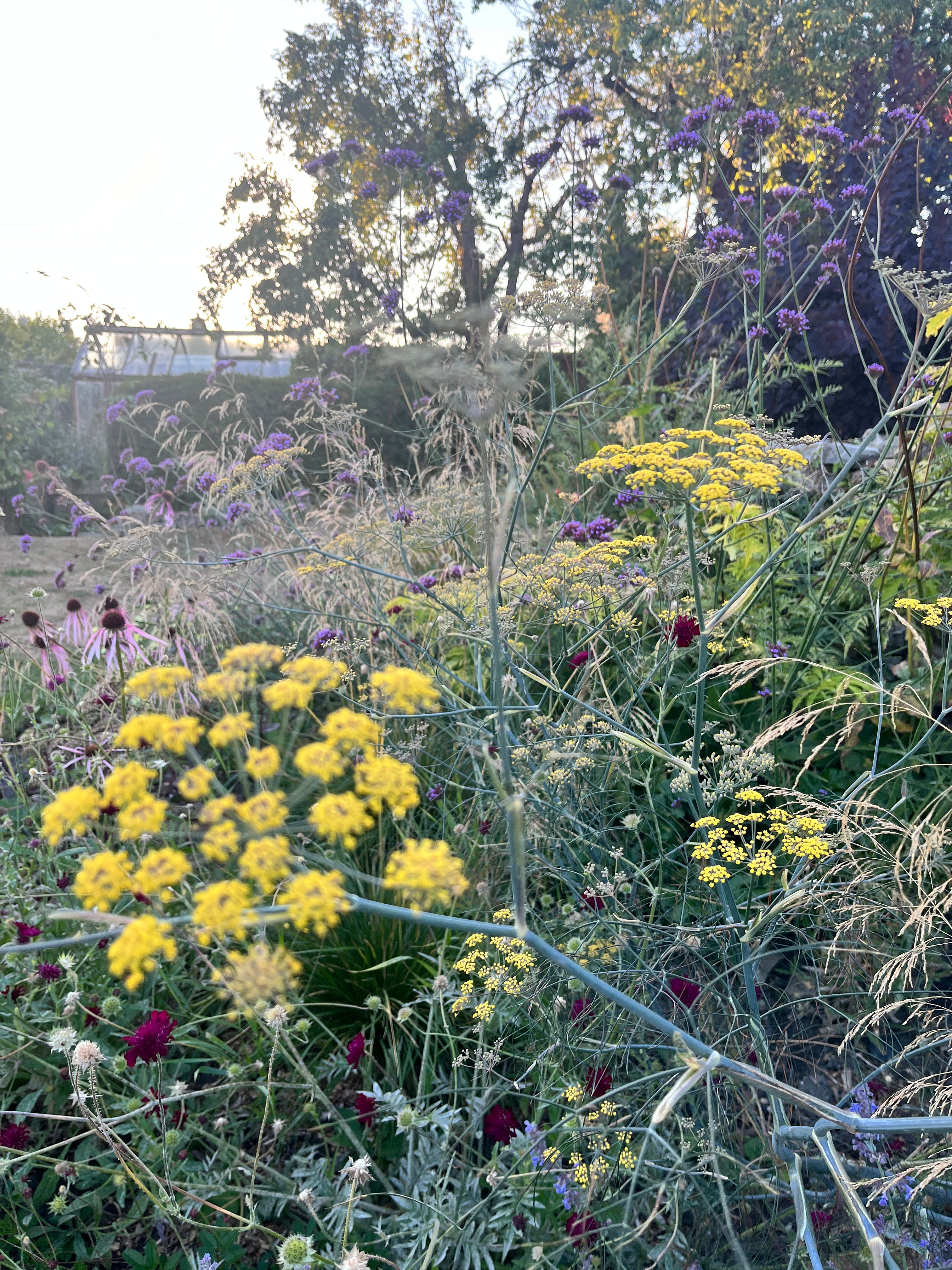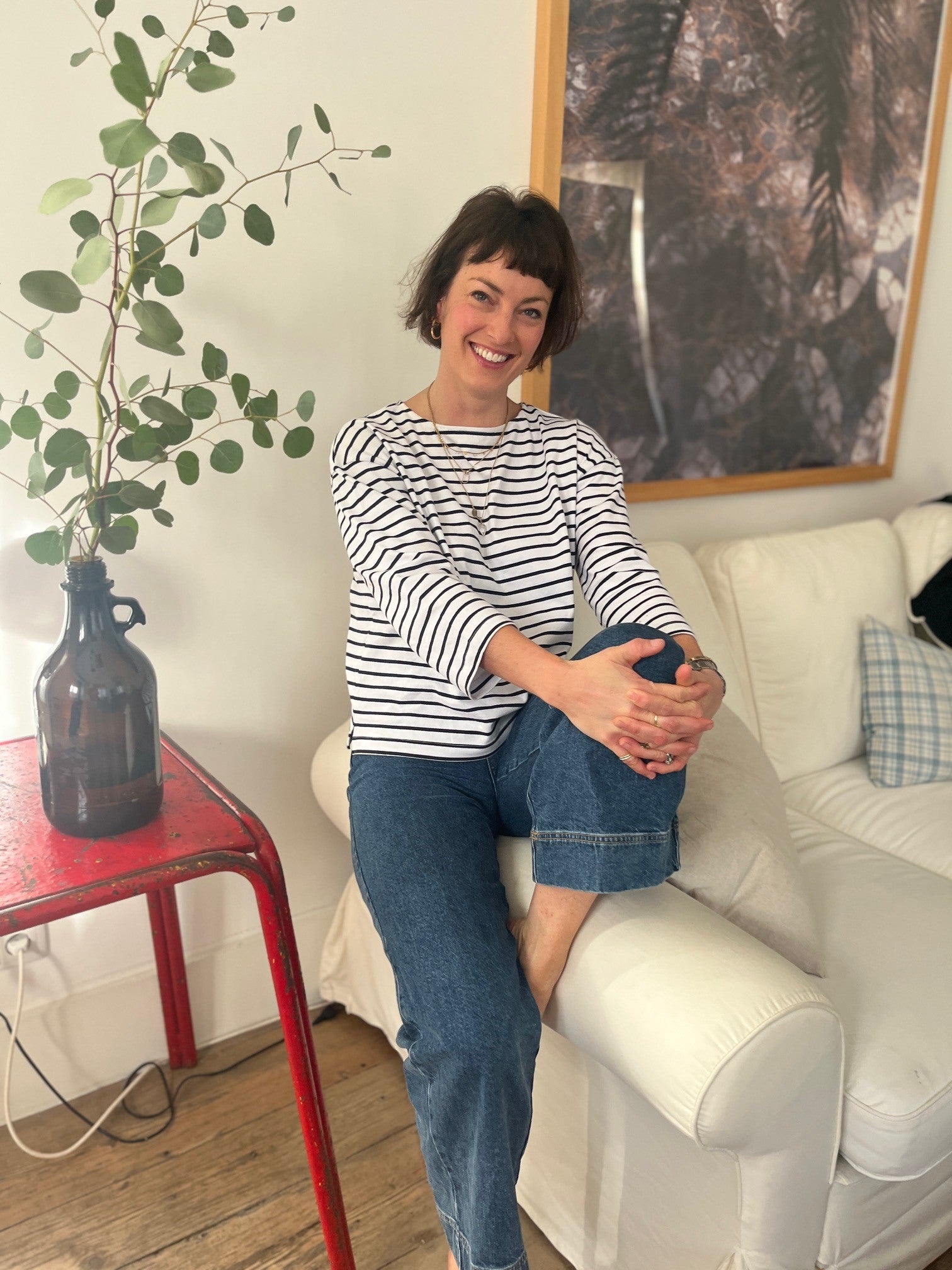
Blog: Sustainable gardening with Lottie Delamain
Lottie Delamain grew up with a very green-fingered mother, but it wasn’t until she lived abroad and had less access to gardens that she realised just how much she loved these green spaces. Today, she helps people to create their perfect outdoor oasis (take a look at her website here and follow here on Instagram @lottie_delamain and has even designed gardens for Chelsea Flower Show. Here, she offers some hints and tips for anyone hoping to garden a little more sustainably…
In Lottie’s own words…
The secret to sustainable gardening is… there isn’t really a secret. It is mostly common sense and a gentle shift in perspective that puts us firmly within (as opposed to above) the rest of the ecosystem we are trying to shape. It is about letting go – letting go of ideas of how it should be, Instagram ideals about what the perfect garden should look like, and our desire for it all to be neat, orderly and finished – because nature just isn’t any of these things. Leaning into a slightly more relaxed style of gardening is not only better for the planet, but also for you. It feels at odd with the principles of sustainable gardening to lay down rules, so here are some guidelines I try and stick to.

No chemicals
An obvious first step, and one you might feel you’re easily able to avoid, until that is, you come across some stubborn bindweed that entangles everything, or those thistles that keep coming back between the paving slabs. But chemicals are probably one of the only hard no’s – they’re not only terrible for plant life, but also for insects and wildlife. Glysophate is extremely toxic to birds and fish, and can destroy soil organisms which in turn does untold damage to the delicate balance of the ecosystem.
Instead, try mulching areas of bare earth to prevent weeds, or creating a gravel garden instead of a traditional bed, which will have the same effect. In the veg garden, invest time in learning your companion plants – marigolds with tomatoes, alliums (onions, leeks, garlic) next to roots to deter aphids, and nasturtiums will lure hungry caterpillars away from brassicas like kale and cabbage.

Variety is the spice of life
Biodiversity sounds like too big a problem for us to solve on an individual level, but it is actually something we can all contribute to in our own little way. Introducing mini-ecosystems in your garden will encourage a variety of insects and wildlife. For example, a simple water-trough, or a densely shaded part of the garden versus a dry sunny spot means you have a variety of climatic conditions. Choosing plants to suit these different conditions increases the number of species and therefore your garden will be able to support a wider variety of insect and animal life.
Where you can, grow your own plants - and not just veg
There is nothing quite like the learning curve of growing a plant from seed. It is a deeply satisfying and rewarding process, (spoiler alert: often littered with pitfalls and disappointment) and quite different to buying a plant from a shop. If you have nurtured a plant from seed to full bloom, you will love and look after it in an entirely different way than if not. It is not always practical to grow everything yourself (I certainly don’t) but try something simple like Cosmos (sow seeds in April have an abundance of flowers by July) and you will soon be woo-ed by the magic of home grown plants – nothing will make you more proud (and smug) than picking a bunch of flowers you’ve grown from seed.

Work with what you’ve got
Like everything else, we too easily reach for the brand-new option that is clickable and deliverable the next day. It is undeniably tempting, and sometimes entirely necessary, but often there are elements in the garden that can be reused. It often involves starting the design process with a more open mind – not going in with an idea of what it will look like at the end, but beginning with the materials there are on site as the starting point, and seeing where it takes us. Hard materials are expensive and resource heavy.
It is so much better to reuse where possible, or look at local reclamation sites – often a treasure trove of pavers, bricks, furniture, urns , water features. Yes it takes longer, and you might not find exactly what you went there for, but you might find something you didn’t know you wanted which turns out to be pivotal to the design. It’s about keeping an open mind and innovating with what you’ve got.
Water is an increasingly precious resource, even in soggy old UK. Easy, obvious hacks are water butts, which you can rig up to a hose or even an irrigation system. Planting the right plants in the first place is another no brainer – there is more and more need for drought-tolerant planting in the UK – look to the Mediterranean for the types of plants that can withstand very little love.
Shrubby evergreens like rosemary, sages, lavender and olives, or anything with a grey silvery leaf, will be better at riding out a heatwave than those with green glossy leaves. If you get the right plants in the right place, you will save yourself a lot of water in the long run. And if you’re planting in containers, make sure they’re big – lots of tiny pots will dry out very quickly and you’ll have a watering can attached to your arm for most of the summer.

Let it all hang out
Last but absolutely not least, embrace imperfection. We are seeing a much broader acceptance of wilder, looser gardens today, which is brilliant, but I still think people have a slightly fetishized idea of what this looks like. It can all be a bit messy - a riot of colour and a chaotic jumble of plants is so much more appealing than an immaculate lawn, and many times over, better for the planet. Letting it all go a bit and finding joy in the garden is probably the single most sustainable thing you can do – because looking after nature starts with enjoying being in it.



